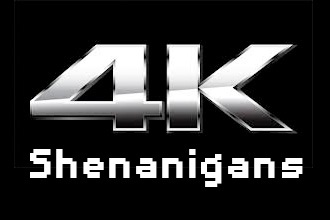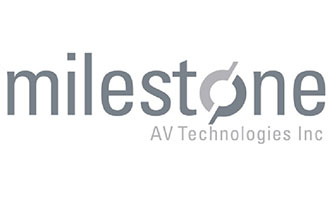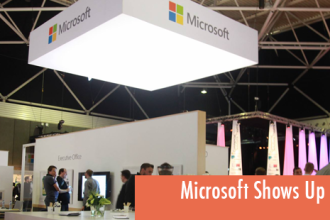4K Shenanigans
 I’m starting the day off with one of the biggest feature buzzwords of InfoComm: 4K. And rightly so, 3D in the commercial world has safely faded into obscurity for what it should be – a gimmick to be used sparingly when you need to catch people’s attention for applications like digital signage.
I’m starting the day off with one of the biggest feature buzzwords of InfoComm: 4K. And rightly so, 3D in the commercial world has safely faded into obscurity for what it should be – a gimmick to be used sparingly when you need to catch people’s attention for applications like digital signage.
At a certain size — anything over 60 inches in my opinion — 4K provides an eye-catching and beautiful image. On screen smaller than that, I think the benefit is debatable unless your face is inches from the screen. Other caveats to 4k superiority include the usual suspects like screen quality (contrast, sharpness, backlighting), and the processing power to even push those pixels smoothly in high-action scenes.
We’ve also written about the many complications regarding 4K signal standards and resolutions. It’s no wonder then that Crestron is pushing its 4K Certification program this year. For a control and signal processing box company, to guarantee that the myriad 4K sources and displays all play together smoothly.
But with the popularity comes the siren’s call to marketing departments to ride the trend as much as possible. In it can be very constructive – I’m thinking about Crestron’s 4K certification program. I was skeptical with the idea initially – it seemed to be a way to boost 4k branding. But, the more I think about it, the more it makes sense from a practical point of view from a company who has to support thousands of sources and end points. When signals fail to scale and HDCP fails to handshake — who’s going to get the troubleshooting call? Probably the control/signal processing company. By forcing manufacturer’s to send test models of products for testing, Crestron can ensure cleared products will always play nice.
The less constructive use of 4K branding can be seen in booths like Sony. Don’t get me wrong – they have some beautiful 4k capable products. In particular, you should go see the demo of four powerhouse SRX-T516 4K projectors edge blended into an 8K picture, and the Sony F65 Camera that shoots in native 8K. The Sony laser 4K and 4K short-throw projectors are also worth a visit to the booth.
Where things get sketchy is when you see the 4Kx1K Presentation Solution – a slick interface for assigning sources to zones across two edge blended projectors. TWO 1080P projectors, not four. To my reckoning, that would give you 2Kx1K at best. When I asked if you can string four together to use this interface software, I was told it wouldn’t add any extra zones or functionality. I was told it was just a marketing sign, and didn’t represent the technical specs of the demo.
I think 4K is a solid trend people are going to continue steadily towards on an upgrade path. But, considering the array of competing 4K standards muddying the waters — marketers need to stop making it worse with confusing and deceptive marketing materials. I suspect this isn’t the last misuse of 4K I’ll see while I’m at InfoComm and make sure to give an update as we go these next two days.





